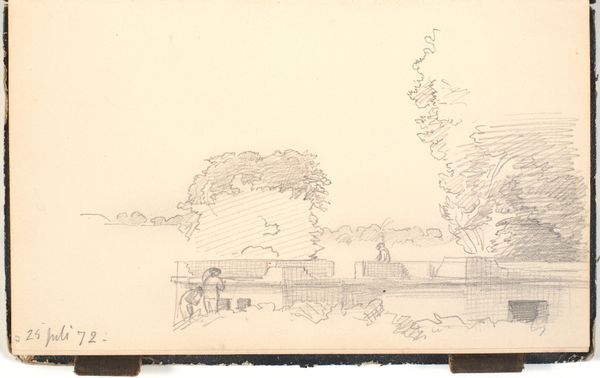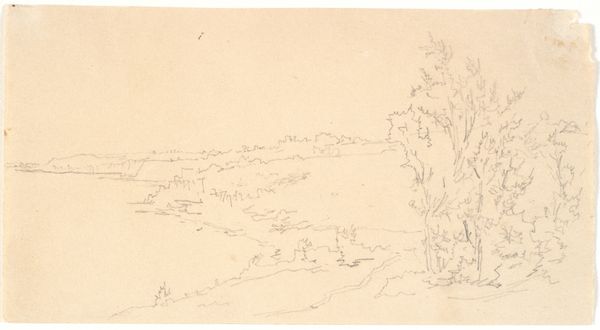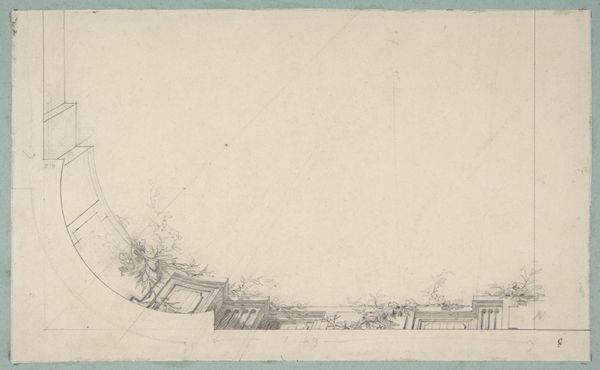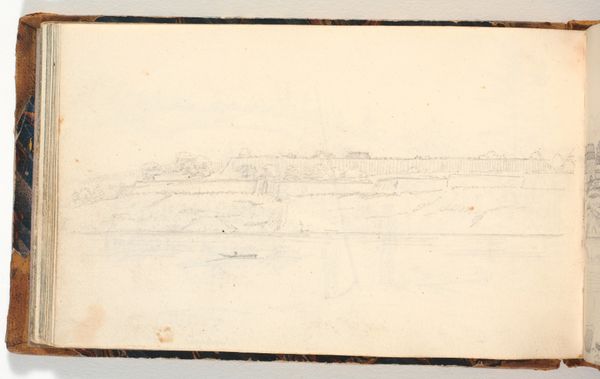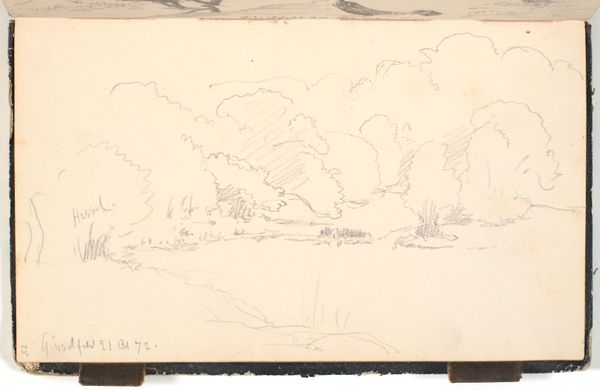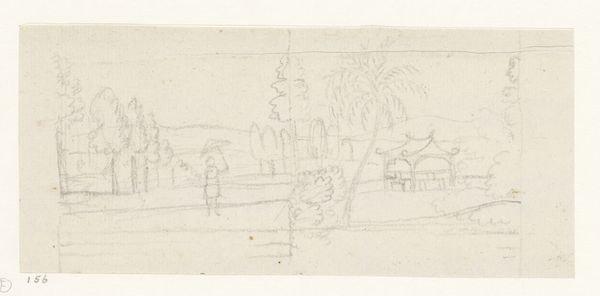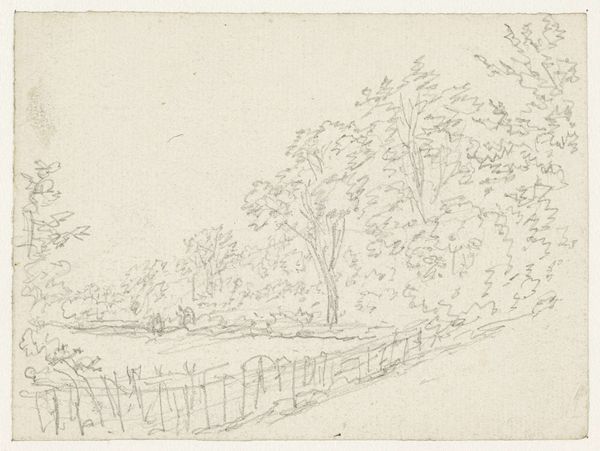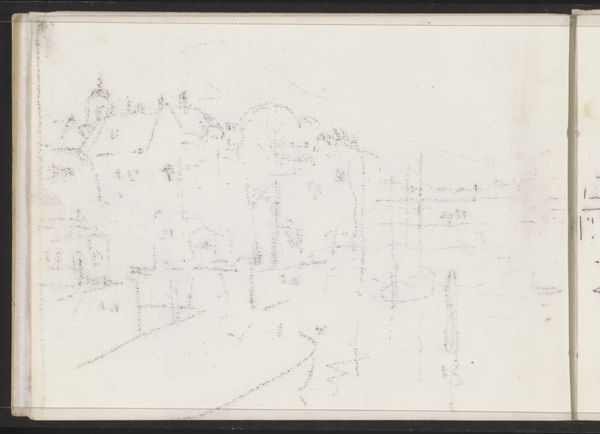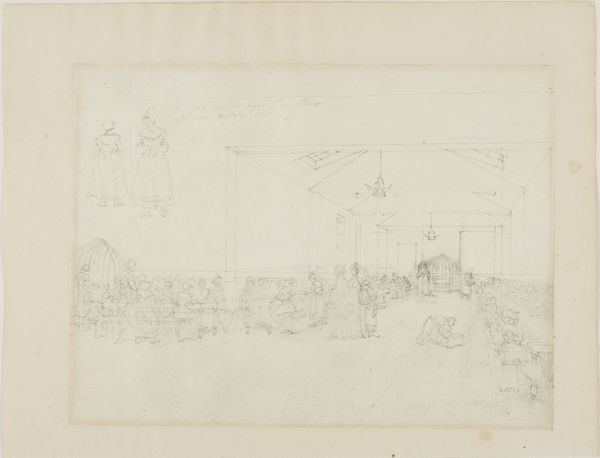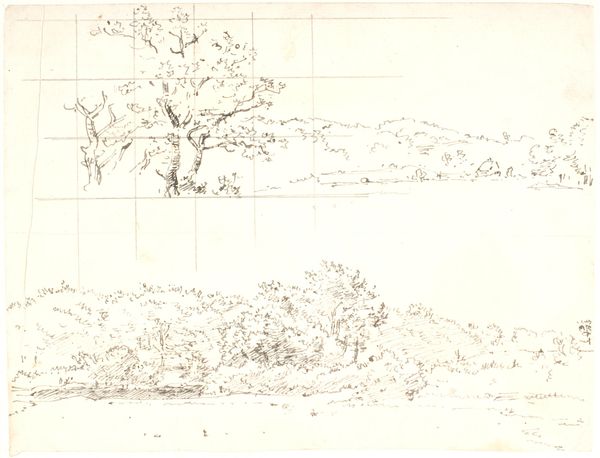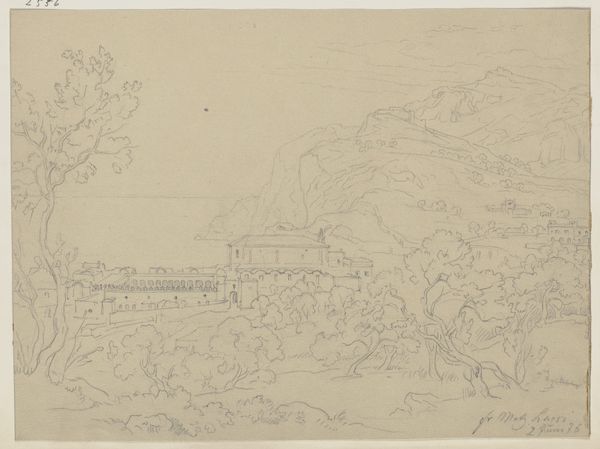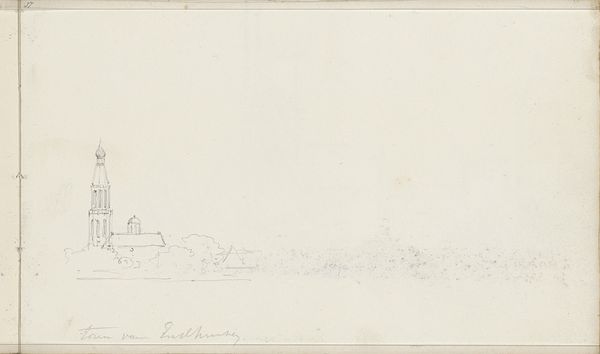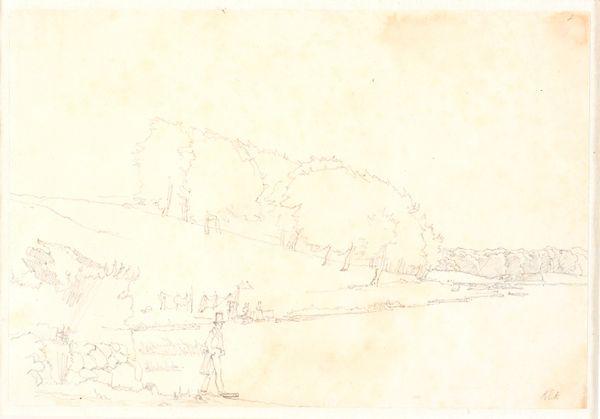
drawing, pencil
#
drawing
#
pen sketch
#
landscape
#
pencil
Dimensions: height 172 mm, width 545 mm
Copyright: Rijks Museum: Open Domain
Curator: Looking at this delicate rendering, we see "Het huis van Eduard Douwes Dekker te Ingelheim," likely created between 1883 and 1884 by Carel Vosmaer. It is rendered in pencil and pen. What are your initial thoughts? Editor: There's an immediate austerity, even fragility to it. The use of simple pencil and fine pen strokes gives it a sketched quality. I imagine the artist sitting on the hillside capturing a quick impression of the scene before him. Curator: Precisely. Note the use of line—so prevalent!—to create a spatial understanding. Vosmaer delineates the architecture, landscape, and perspective primarily through variations in line density. Observe, in particular, how he articulates the house and the undulating hills. It's almost mathematical in its precision. Editor: For me, it evokes questions about labor. The sheer amount of strokes must have required hours! Consider the material limitations as well – working outdoors with just pencil and pen, how reliant he must have been on the immediate resources. And, who owned this land, what socio-economic context framed its creation? Curator: It is definitely a calculated, formal arrangement. Consider the house as the focal point – centrally located, its geometry stands in deliberate contrast to the "natural" forms of the trees. This reinforces a sense of rational order imposed on the landscape. There's a dialogue happening here. Editor: Yes, and think about how such images were made and consumed then, representing both landscape and status, luxury and artistic rendering, all brought into existence through his handiwork. Also, note the limited access; viewing from a distance, there’s that material barrier of the fence reinforcing boundaries. Curator: This brings up a wonderful insight! Viewing the house from afar does speak to issues of access. Nevertheless, considering the stylistic elements allows us to appreciate its intrinsic formalism as a composed artwork. Editor: I’ve also noticed how his choice of rendering and materials—primarily monochrome pen and pencil work—highlights a material efficiency, where only essential components come forward while making social and political realities evident. Curator: This exercise of juxtaposing both our readings does add significant texture to viewing such a quiet piece of landscape artwork, I'd say. Editor: Indeed, acknowledging the labor and the materiality alongside formalism enhances one's appreciation.
Comments
No comments
Be the first to comment and join the conversation on the ultimate creative platform.
